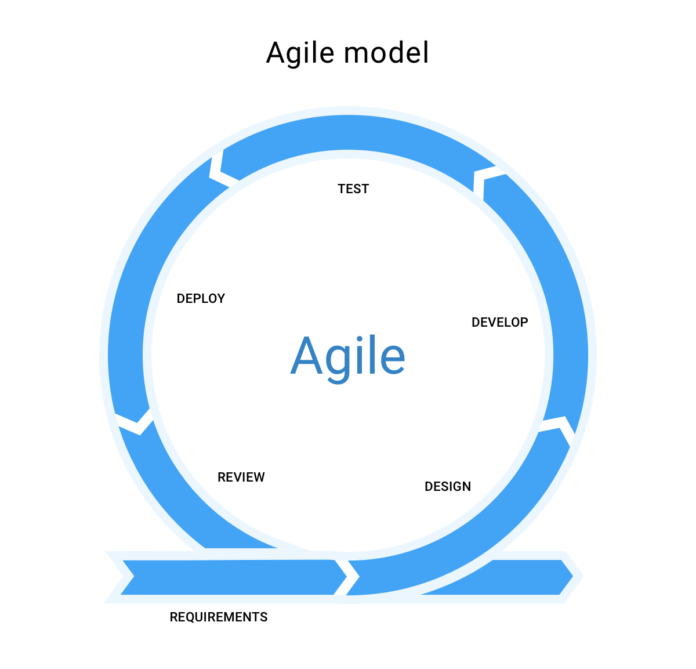Businesses out there are looking for ways to better their agility and speed, and there are different ways available that can help them become better at what they are doing. However, knowing how to choose the right direction and ensuring that it will have the right impact are things that every business has to take into account.
A great way to find out about the agility of your organization is to see how the software development cycle is working. The variation between different software development methodologies and their life cycles isn’t only in terms of the number of steps involved or the terminology but the impact each level is making in the entire lifecycle. Agile software development is one of the most popular of these methods that have helped business in accomplishing their short-term and long-term organizational objectives. Also, not everything can be done in-house, so companies must hire agile consultancy services in the UK to provide them with the expertise for this adoption.
What is the agile software development life cycle (SDLC)?
Let’s begin with the software development life cycle before moving onto its agile form. Software development life cycle or SDLC is the approach or methodology followed to design, develop, and test software. The main objective of any SDLC is to deliver high-quality software products within pre-defined cost and time restrictions. Now let us see how agile software development life cycle is different.
Agile software development life cycle combines both incremental and iterative approaches for developing software. The primary focus areas of agile SDLC include customer satisfaction and process adaptability. It ensures that both of these are taken care of by rapid delivery of the required product. Agile SDLC involves the process of product development into incremental builds. These builds undergo constant iterations to ensure lower time consumption and a quality product.
Teamwork is an essential component of agile software development life cycle. Different teams work collaboratively and make necessary amendments at various stages to achieve the ultimate objective of the project. What are the different phases of agile SDLC? Let us see.
Phases of agile SDLC
The most important purpose that the agile SDLC serves is adding structure to the method used for delivering a working product and to make it more flexible and fluid. When you divide the builds into smaller segments, you are in complete control of the product development process. You are in a better position to deliver a product that has much more value to provide its customers. Here are the different phases of agile software development life cycle:
- Requirements gathering: So before you start designing the project or ask an agile development consulting firm to do it on your behalf, you need first to put together a list of all the essential requirements of your project. Some of these requirements may include the result that you want the project to achieve, the features that it will have and support, and more. It is always advisable to not put too many requirements in this initial list. Just add the features that are necessary and ignore those that can be done without. These features can be discussed when the product is deployed and its primary features are working as they were supposed to.
- Design: When you have a clear idea of the project, you will be working on, sit down with the stakeholders to discuss and define its essential details. You can either use the UML diagram or the flow diagram to display the new features and to show how the new product will integrate with the existing system. Further iterations in the design phase are done to refine the earlier design so that it is compatible with the new features.
- Development/construction: This phase involves bringing the initial requirements documentation to reality. The writing of the code happens in this phase. No wonder this phase is the longest out of all the other stages. It is also the spine of the entire agile software development life cycle. The product undergoes several improvements to ensure that simple functionality.
- Integration and testing: The primary objective of this phase is to ensure that the product doesn’t have any bugs and that it supports whatever the developers have written earlier. Tests are conducted to check the code and to ensure that the solution is in line with the business objectives.
- Implementation and deployment: The software is deployed and is made available to the people it was made for. Further iterations provide updates for getting rid of bugs and bringing in new features.
- Feedback/review: This is the last phase of the agile SDLC. The team works on the feedback that it has received after the product was made available for use.
Agile SDLC uses incremental and iterative approaches to implement planning and management techniques for the development of software products based on specific project requirements.








![Avast Driver Updater Key 2022 | Activation Key V2.5.9 [Free]- Avast Driver Updater Key 2021](https://vintank.com/wp-content/uploads/2021/02/Avast-Driver-Updater-Key-2021-100x70.jpg)
![Avast Premier Activation Code and License Key [Working] Avast Premier Activation Code and License Key](https://vintank.com/wp-content/uploads/2021/09/Avast-Premier-Activation-Code-and-License-Key-100x70.jpg)
